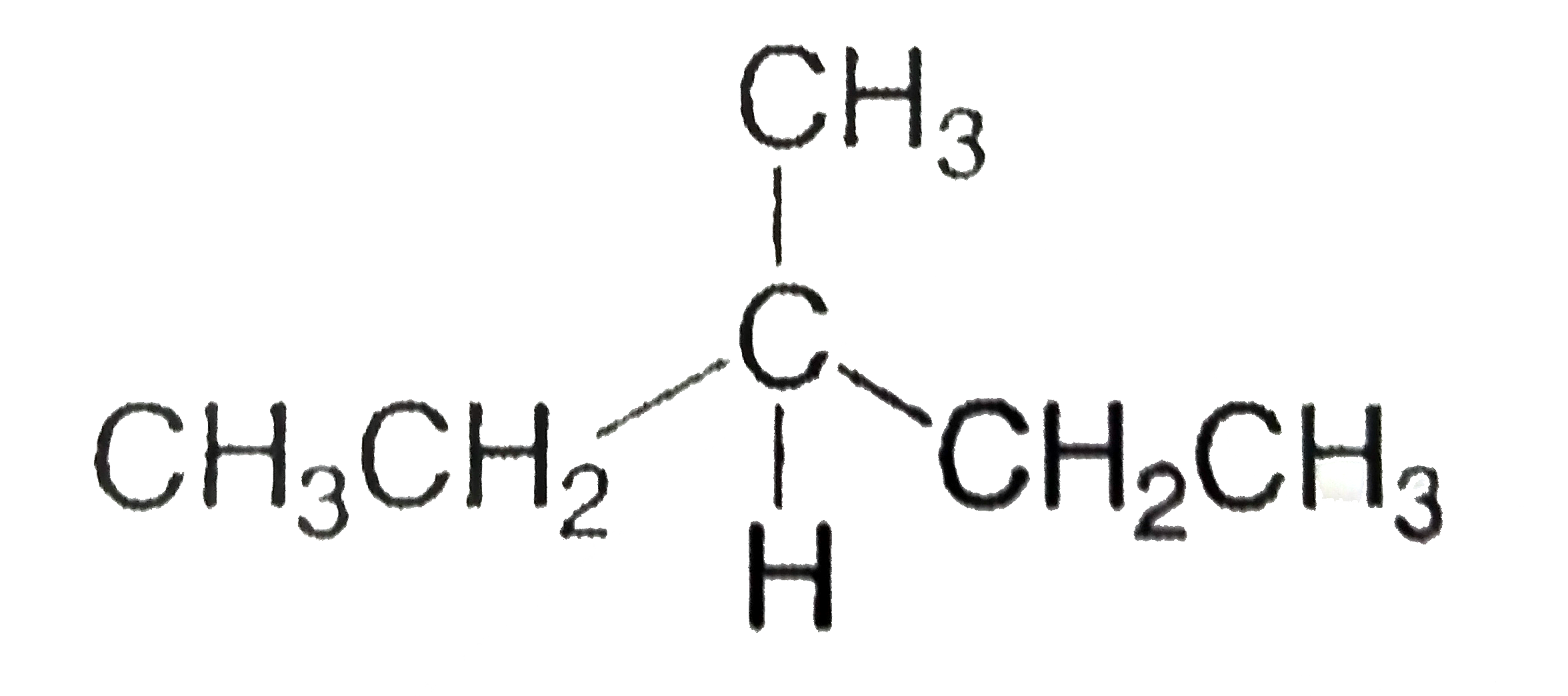Given the total number of isomers, including stereoisomers, obtained on monochlorination of isopentane.
To determine the total number of isomers, including stereoisomers, obtained from the monochlorination of isopentane, we can follow these steps:
1. Identify the Structure of Isopentane:
- Isopentane, also known as 2-methylbutane, has the following structure:
CH3|CH3−CH−CH2−CH3|CH3
- It consists of 5 carbon atoms.
2. Monochlorination Process:
- Monochlorination involves replacing one hydrogen atom in isopentane with a chlorine atom (Cl) using Cl2 and UV light (Hν).
3. Chlorination at Carbon 1 (C1):
- Chlorination at C1 leads to:
Cl|CH3−CH−CH2−CH3|CH3
- This carbon is not chiral, so we get 1 product (let's call it Product A).
4. Chlorination at Carbon 2 (C2):
- Chlorination at C2 results in:
CH3|CH3−CH−CH2−CH3|Cl
- This carbon is chiral, leading to 2 products (enantiomers, Product B and Product C).
5. Chlorination at Carbon 3 (C3):
- Chlorination at C3 gives:
CH3|CH3−CH−CH−CH3|Cl
- This carbon is not chiral (two identical methyl groups), resulting in 1 product (Product D).
6. Chlorination at Carbon 4 (C4):
- Chlorination at C4 results in:
CH3|CH3−CH2−CH−CH3|Cl
- This carbon is also not chiral, leading to 1 product (Product E).
7. Chlorination at Carbon 5 (C5):
- Chlorination at C5 gives the same product as chlorination at C4 because of symmetry:
CH3|CH3−CH2−CH−CH3|Cl
- This is the same as Product E, so we do not count it again.
8. Total Count of Isomers:
- From the above steps, we summarize:
- Product A (C1): 1 isomer
- Products B and C (C2): 2 isomers (stereoisomers)
- Product D (C3): 1 isomer
- Product E (C4): 1 isomer
- Total = 1 (A) + 2 (B & C) + 1 (D) + 1 (E) = 5 isomers.
Final Answer:
The total number of isomers, including stereoisomers, obtained from the monochlorination of isopentane is 5.
- Isopentane, also known as 2-methylbutane, has the following structure:
CH3|CH3−CH−CH2−CH3|CH3
- It consists of 5 carbon atoms.
- Monochlorination involves replacing one hydrogen atom in isopentane with a chlorine atom (Cl) using Cl2 and UV light (Hν).
- Chlorination at C1 leads to:
Cl|CH3−CH−CH2−CH3|CH3
- This carbon is not chiral, so we get 1 product (let's call it Product A).
- Chlorination at C2 results in:
CH3|CH3−CH−CH2−CH3|Cl
- This carbon is chiral, leading to 2 products (enantiomers, Product B and Product C).
- Chlorination at C3 gives:
CH3|CH3−CH−CH−CH3|Cl
- This carbon is not chiral (two identical methyl groups), resulting in 1 product (Product D).
- Chlorination at C4 results in:
CH3|CH3−CH2−CH−CH3|Cl
- This carbon is also not chiral, leading to 1 product (Product E).
- Chlorination at C5 gives the same product as chlorination at C4 because of symmetry:
CH3|CH3−CH2−CH−CH3|Cl
- This is the same as Product E, so we do not count it again.
- From the above steps, we summarize:
- Product A (C1): 1 isomer
- Products B and C (C2): 2 isomers (stereoisomers)
- Product D (C3): 1 isomer
- Product E (C4): 1 isomer
- Total = 1 (A) + 2 (B & C) + 1 (D) + 1 (E) = 5 isomers.
The total number of isomers, including stereoisomers, obtained from the monochlorination of isopentane is 5.
Topper's Solved these Questions
- BOOK - CENGAGE CHEMISTRYCHAPTER - ALKANES AND CYCLOALKANESEXERCISE - EXERCISES24videos
ALKANES AND CYCLOALKANES
- BOOK - CENGAGE CHEMISTRYCHAPTER - ALKANES AND CYCLOALKANESEXERCISE - Paragraph for problem24videos
ALKANES AND CYCLOALKANES
- BOOK - CENGAGE CHEMISTRYCHAPTER - ALKANES AND CYCLOALKANESEXERCISE - Archives13videos
ALKANES AND CYCLOALKANES
- BOOK - CENGAGE CHEMISTRYCHAPTER - ALKENES AND ALKADIENESEXERCISE - Single correct Answer14videos
ALKENES AND ALKADIENES
Similar Questions
Knowledge Check
- Question 1 - Select One
The number of isomers obtained on monochlorination of propane
A4B3C2D1 - Question 2 - Select One
The number of isomers (including stereoisomers) of C5H10 are
A10B11C12D13 - Question 3 - Select One
The number of all possible products excluding stereoisomers obtained on monochlorination of n-butane and iso-butane are respectively
A2 and 3B3 and 2C2 and 1D2 and 2
Find out the total number of isomers including stereoisomers obtined by dichlorination of propane .
View SolutionFind out the maximum number of isomers (including steroisomers) that are possible on monochlorination of the given compound:
CH3−CH2−CH3∣C∣H−CH2−CH3View SolutionThe maximum number of isomers (including stereoisomers) that are possible on monochlorination of the following compound, is
 View Solution
View SolutionThe maximum number of isomers (including stereoisomers ) that are possible on monochlorination of the following compound is :
 View Solution
View SolutionTotal number of products form including stereoisomers during monochlorination of 2 - methyl butane?
View Solution

